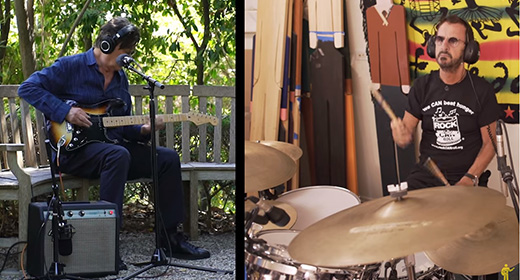by Douglas O’Brien: When you hear “hypnosis” you might think of the traditional form of hypnosis where the powerful, authoritative hypnosis implants suggestions in his subject,
 such as, “you are getting sleeeepy. Your eyelids are growing heavier and heavier. “You will quit smoking,” and so on. But really, hypnotic trance exists in many different forms every day. Sometimes it is recognized and utilized (hypnotherapy rituals, or dance, for example), but most of the time it goes unnoticed (daydreaming, people’s behavior on elevators, or irrational fears. to name a few). In fact, as a practicing hypnotherapist, I believe that people live most of the lives in one trance or another and my job is generally not to hypnotize them, but to de-hypnotize them. The true hypnotists in life are teachers, religious leaders, and even advertisers. The most powerful hypnosis in anyone’s life, are that individual’s, parents.
such as, “you are getting sleeeepy. Your eyelids are growing heavier and heavier. “You will quit smoking,” and so on. But really, hypnotic trance exists in many different forms every day. Sometimes it is recognized and utilized (hypnotherapy rituals, or dance, for example), but most of the time it goes unnoticed (daydreaming, people’s behavior on elevators, or irrational fears. to name a few). In fact, as a practicing hypnotherapist, I believe that people live most of the lives in one trance or another and my job is generally not to hypnotize them, but to de-hypnotize them. The true hypnotists in life are teachers, religious leaders, and even advertisers. The most powerful hypnosis in anyone’s life, are that individual’s, parents.
I’ll elaborate on that point in a moment. But allow me to say a few words about hypnosis, since there are many forms of hypnosis, and even more misconceptions about hypnosis.
Hypnotherapy is simply the usage of trance for therapeutic purposes. Traditional hypnotherapy uses commanding language as in the above example, called direct suggestion. This method sometimes works, but not for everybody. Some people resist these suggestions, perhaps because they resent authority figures, and they are sometimes labeled as “resistant”, or worse, “unhypnotizable,” by traditional hypnotherapists.
But not all hypnotherapists believe in direct suggestions. In fact, Ericksonian hypnotherapy uses more what is called indirect suggestions. Indirect suggestions are much harder to resist because they are often not even recognized as suggestions by the conscious mind, since they usually disguise themselves as stories or metaphors. An example of an indirect suggestion: “Perhaps your eyes will grow tired as you listen to this story, and you will want to close them, because people can, you know, experience a pleasant, deepening sense of comfort as they allow their eyes to close, a they relax deeply.” This would all be said in such a way as to mark out key words and phrases by subtle shifts in the tone of voice. The person’s unconscious awareness thus responds to these “embedded commands.”
Think about the following scenario. A child of say four or five years of age is carefully carrying a full glass of milk to the table. The amateur parent of the child warns in a stern voice, “don’t drop that!” The child looks up at the parent, stumbles a bit, drops the glass and spills milk everywhere. The now angry parent yells, “I told you not to drop that! You’re so clumsy. You’ll never learn!”
As unintentional as It may be, this scenario, is an example of hypnosis, complete with induction, suggestion, and post hypnotic suggestion. The powerful authoritative voice (the parent), having created and utilized through indirect suggestion (“don’t drop that”), an altered state (trance), has issued a direct post-hypnotic suggestion (“You’re so clumsy. You’ll never learn”). “Post-hypnotic because, if the child accepts the suggestion (and children often do), he or she will always see him/herself as clumsy. This post-hypnotic suggestion by the parent may well adhere to the directive in the future, sabotaging the child’s success.
We would do well to realize that in a sense we are all hypnotists, and that if we are parents we have very suggestible subjects in our care on whom our language may have great effects. We must learn to give our children positive suggestions.
Let’s explore how the parent could have handled the situation more scrupulously: First of all there is the confusing directive, “don’t drop that.” Why Is that confusing? Because the human brain does not know how to compute negations. Let me illustrate by having you try a little experiment: For the next fifteen seconds do not think about your breathing. Don’t think about whether you are breathing up high in your chest or down low in your abdomen, or whether you are taking deep or shallow breaths. Just don’t think about it at all.
Okay. Be honest. How many of you started thinking about your breathing if only for a moment. What?! But I specifically told you not to! You see, in order to not think about something, your brain first has to represent it in your mind, and then try to somehow erase the image. If you were successful at all in this experiment, it was probably due to the fact that you were able to direct your mind to think about something else instead.
Back to the parent-child scenario. One way the parent could have set the child up for success would have been to say something like, “that’s good honey”, stay balanced,” or “that’s right, be careful,” and any combination of words that are stated in the positive. Chances are the child would complete the journey to the table with the glass of milk intact. Let’s say for some reason the child does in fact spill the milk. The savvy parent could say, “hmm. I guess we shouldn’t fill the glass to the full next time, huh? We learned something, didn’t we? You are good at learning.”
Milton Erickson, the innovative psychiatrist after whom Ericksonian hypnotherapy was named, might have even made a game out of trying to get a whole glass of milk to the table, or tell a story about carrying milk buckets in from the barn as a child.
Milton H. Erickson, M.D. is considered the father of modern hypnotherapy. The therapy he engendered, Ericksonian hypnotherapy, is one of the fastest growing and influential branches of hypnotherapy today. His methods have inspired short term strategic therapy, the rebirth of guided imagery, and NLP (Neuro-Linguistic Programming) to name a few. Even John Bradshaw, in both of his acclaimed series on PBS, frequently quotes Erickson and calls him “the greatest therapist who ever lived.”
What sets Ericksonian Hypnosis apart from other, more traditional forms of hypnosis? Perhaps the best way to gain insight into this question is to follow Erickson’s lead and use stories, starting with Erickson’s own dramatic life story. A story of courage and determination and one that, to me, is a confirmation of the belief that there are no coincidences. Everything happens for a reason, and has benefit.
Erickson was born in a pioneering and rural farming county in 1902. The schooling he and many of his brothers and sisters received was basic, and thus it is not surprising that nobody noticed that young Milton was experiencing the world in a rather unique manner: he was color blind, tone deaf, and slightly dyslexic. These perceptual abnormalities may have led Erickson to a road less traveled, but it wasn’t until his teenage years that his life would take a truly pivotal turn – a turn that would affect his destiny and the evolution of hypnotherapy as we know it.
In the summer of 1919, at the age of seventeen, he was stricken with his first attack of polio (his second would come at the age of fifty-one). It was an extremely severe infection. He was not expected to survive, and his parents were told that he would be dead by the following morning. He lapsed into a coma. When he awoke three days later he found himself completely paralyzed, unable to move except for his eyes, and barely able to speak. Since there were no rehabilitation facilities in their community, there was no reason to expect that he’d ever recover.
Milton kept his still active and keen mind occupied as he played mental games with himself. He learned to notice the difference between his family’s verbal and non-verbal communications. He noticed that sometimes people would say “no” with their mouth while their body was clearly saying “yes.” His parents, who took care of him as best they could, fashioned a crude potty for him and left him strapped into his chair for hours. He was sitting somewhere in the middle of the room, looking longingly at the window, wishing he could be near it so that he could see what was happening outside. As he sat there, seemingly immobile, intensely wishing and imagining being outside playing, the chair began to rock slightly. This excited him greatly and he endeavored to make it happen again. He gave himself direct commands: “Move legs! Rock the chair!” Nothing happened. Finally he gave up, sank back into his daydreams, and once more imagined playing outside. Again the chair began to rock! It was the indirect suggestion, that vivid imaging that produced a response. Using this discovery, over the following two years, Milton taught himself to walk again (aided in the task by closely watching his baby sister who was only then learning to walk), and closely observed how human beings, communicate and how the unconscious mind works. Thus one of the hallmarks of hypnotherapy was born: indirect suggestion.
Erickson said, “everyone is as individual as their own thumb print.” In his practice, he tailored every induction to the client’s individual needs and perceptual bias. He believed in the wisdom of the unconscious mind, and in the theory that people have all the resources necessary to make changes inside themselves. He believed that the job of the therapist is to help the, client re-establish his/her connection with his/her inner resources and to develop a rapport between the conscious and the unconscious mind.
To illustrate this ideas of client-centered therapy, Erickson once told his story to an assembled group of psychiatrists:
I was returning from high school one day and a runaway horse with a bridle sped past a group of us into a farmer’s yard looking for a drink of water. The farmer didn’t recognize it so I jumped up to the horse’s back, took hold of the reins and said “Giddy-up” and headed for the highway. I knew the horse would take me in the right direction. I didn’t know what the right direction was. And the horse trotted and galloped along. Now and then he would forget he was on a highway and would stray off into a field. So I would pull on him a bit and call his attention to the fact that the highway was where he was supposed to be. And finally about four miles from where I had boarded him he turned into a farmyard and the farmer said, “So that’s how the critter came back. Where did you find him?” I said, “about four miles from here.” “How did you know he should come here?” I said, “I didn’t know”, the horse knew. All I did was keep his attention on the road. I think that Is how you do psychotherapy.
Often, Erickson didn’t use formal trace induction. Instead he told stories that had a deeper meaning. Sometimes that meaning was clear; most times it was not. At least not to the person’s conscious mind. For example, a twelve-year old boy was brought in to see Erickson about bedwetting. Erickson dismissed his parents and began talking to the boy about other topics, avoiding a direct discussion about bedwetting altogether. Upon learning that the boy played baseball and his brother football, Erickson elaborated on the fine muscle coordination it takes to play baseball, compared to the uncoordinated muscle skills used in football. The boy listened raptly as Erickson described in fine detail all the muscle adjustments his body automatically makes in order to position him underneath the ball and catch it: the glove has to be opened at just the right moment and clamped down again at just the right moment. When transferring the ball to another hand, the same kind of fine muscle control is needed. Then, when throwing the ball to the infield, if one lets go too soon, it doesn’t go where on wants it to go. Likewise letting go too late leads to an undesired outcome and consequently to frustration. Erickson explained that letting go just at the right time gets it to go where one wants it to go, and that constitutes success in baseball. Therapy with this young man consisted of four session that included talks about other sports, boy scouts, and muscles. But bedwetting was not discussed, and “formal hypnosis” was not conducted. The boy’s bedwetting disappeared soon thereafter.
And what could you expect if you decided to go to an Ericksonian hypnotherapist today? Hard to specify. In much the same way that Erickson treated every patient on a very individual basis, there are as many approaches to the continuation of his work as there are followers of it.
There is a joke that kind of sums it up: “How many Ericksonian hypnotherapists does it take to change a light bulb?” Answer: “Seventeen. One to change the bulb and sixteen to argue how Milton would have done it.”









































